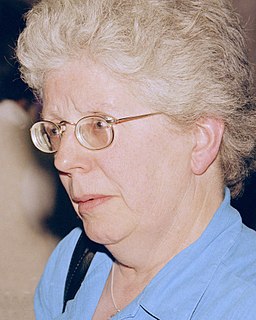Related Research Articles

A blood type is a classification of blood, based on the presence and absence of antibodies and inherited antigenic substances on the surface of red blood cells (RBCs). These antigens may be proteins, carbohydrates, glycoproteins, or glycolipids, depending on the blood group system. Some of these antigens are also present on the surface of other types of cells of various tissues. Several of these red blood cell surface antigens can stem from one allele and collectively form a blood group system.

The ABO blood group system is used to denote the presence of one, both, or neither of the A and B antigens on erythrocytes. In human blood transfusions it is the most important of the 38 different blood type classification systems currently recognized. A mismatch in this, or any other serotype, can cause a potentially fatal adverse reaction after a transfusion, or an unwanted immune response to an organ transplant. The associated anti-A and anti-B antibodies are usually IgM antibodies, produced in the first years of life by sensitization to environmental substances such as food, bacteria, and viruses.
Alexander Solomon Wiener, a lifelong resident of New York City, was recognized internationally for his contributions to medicine. He was a leader in the fields of forensic medicine, serology, and immunogenetics. His pioneer work led to discovery of the Rh factor in 1937, along with Dr. Karl Landsteiner, and subsequently to the development of exchange transfusion methods that saved the lives of countless infants with hemolytic disease of the newborn. He received a Lasker Award for his achievement in 1946.
The term human blood group systems is defined by International Society of Blood Transfusion as systems in the human species where cell-surface antigens—in particular, those on blood cells—are "controlled at a single gene locus or by two or more very closely linked homologous genes with little or no observable recombination between them", and include the common ABO and Rh (Rhesus) antigen systems, as well as many others; 38 major human systems are identified as of August 2019.
The Rh blood group system is a human blood group system. It contains proteins on the surface of red blood cells. It is the second most important blood group system, after the ABO blood group system. The Rh blood group system consists of 49 defined blood group antigens, among which the five antigens D, C, c, E, and e are the most important. There is no d antigen. Rh(D) status of an individual is normally described with a positive or negative suffix after the ABO type. The terms Rh factor, Rh positive, and Rh negative refer to the Rh(D) antigen only. Antibodies to Rh antigens can be involved in hemolytic transfusion reactions and antibodies to the Rh(D) and Rh antigens confer significant risk of hemolytic disease of the fetus and newborn.

The Lister Institute of Preventive Medicine, informally known as the Lister Institute, was established as a research institute in 1891, with bacteriologist Marc Armand Ruffer as its first director, using a grant of £250,000 from Edward Cecil Guinness of the Guinness family. It had premises in Chelsea in London, Sudbury in Suffolk, and Elstree in Hertfordshire, England. It was the first medical research charity in the United Kingdom. It was renamed the Jenner Institute in 1898 and then, in 1903, as the Lister Institute in honour of the great surgeon and medical pioneer, Dr Joseph Lister. In 1905, the institute became a School of the University of London.

Dame Kay Elizabeth Davies, is a British geneticist. She is Dr Lee's Professor of Anatomy at the University of Oxford and a Fellow of Hertford College, Oxford. She is director of the Medical Research Council (MRC) functional genetics unit, a governor of the Wellcome Trust, a director of the Oxford Centre for Gene Function, and a patron and Senior Member of Oxford University Scientific Society. Her research group has an international reputation for work on Duchenne muscular dystrophy (DMD). In the 1980s, she developed a test which allowed for the screening of foetuses whose mothers have a high risk of carrying DMD.

Arthur Ernest Mourant FRS was a British chemist, hematologist and geneticist who pioneered research into biological anthropology and its distribution, genetics, clinical and laboratory medicine, and geology.

Blood group Rh(CE) polypeptide is a protein that in humans is encoded by the RHCE gene. RHCE has also recently been designated CD240CE.

Ecto-ADP-ribosyltransferase 4 is an enzyme that in humans is encoded by the ART4 gene. ART4 has also been designated as CD297.

The Sir William Dunn School of Pathology is a Department within the University of Oxford. Its research programme includes the cellular and molecular biology of pathogens, the immune response, cancer and cardiovascular disease. It teaches undergraduate and graduate courses in the medical sciences.

The XG antigen is a red blood cell surface antigen discovered in 1962. by researchers at the MRC Blood Group Unit.

Robert Russell Race CBE FRS FRCP FRCPath MRCS was a British medical doctor and human geneticist. He was Director of the Medical Research Council Blood Group Unit, of the Lister Institute of Preventive Medicine. His second wife, whom he married in 1956, was Ruth Sanger, who succeeded him in the post.

Ruth Ann Sanger was an Australian immunogeneticist, haematologist and serologist. She was known for her work on human red cell antigens and for the genetic mapping of the human X chromosome. She was Director of the Medical Research Council Blood Group Unit, of the Lister Institute of Preventive Medicine from 1973-1983.
Sylvia Dorothy Lawler and later remarried as Sylvia Dorothy Bagshawe, was an English geneticist who worked in the field of human genetics.

Ketan Jayakrishna Patel is Director of the MRC Weatherall Institute of Molecular Medicine and the MRC Molecular Haematology Unit at the University of Oxford. Until 2020 he was a tenured principal investigator at the Medical Research Council (MRC) Laboratory of Molecular Biology (LMB).
Robin Campbell Allshire is Professor of Chromosome Biology at University of Edinburgh and a Wellcome Trust Principal Research Fellow. His research group at the Wellcome Trust Centre for Cell Biology focuses on the epigenetic mechanisms governing the assembly of specialised domains of chromatin and their transmission through cell division.

Professor Susan "Sue" Povey FMedSci, was a British geneticist.

Willy Albert Flegel is a German-American medical researcher, geneticist, and physician who is best known for his work in the field of the Rh blood group. Flegel is the chief of the laboratory services section of the Department of Transfusion Medicine at the National Institutes of Health Clinical Center (NIH).

Founded in 1989 by Sir David Weatherall, the MRC Weatherall Institute of Molecular Medicine at the University of Oxford is a research institute located at the John Radcliffe Hospital in Oxford. The institute focuses on furthering our understanding of clinical medicine at a molecular level. It was one of the first institutes of its kind in the world to be dedicated to research in this area.
References
- ↑ Peter S. Harper (24 September 2008). A Short History of Medical Genetics. Oxford University Press, USA. pp. 331–. ISBN 978-0-19-020839-4.
- ↑ Mann JJ, Cahan A, Gelb AG, et al. A sex-linked blood group. Lancet. 1962;i:8.
- ↑ Ellis NA, Tippett P, Petty A, et al. (November 1994). "PBDX is the XG blood group gene". Nat. Genet. 8 (3): 285–90. doi:10.1038/ng1194-285. PMID 7533029.
- ↑ Mazumdar, Pauline M. H. (1995). Species and Specificity: An Interpretation of the History of Immunology. Cambridge University Press. p. 347. ISBN 978-0-521-52523-7.